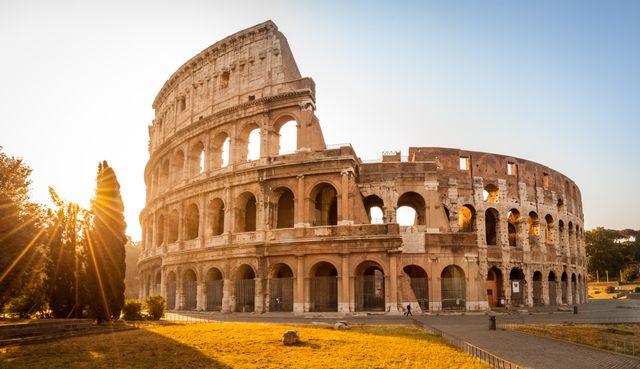2.2.2
Catholicism Under Henry VIII
Extent of Religious Change, 1529-1536
Extent of Religious Change, 1529-1536
Between 1529 and 1536, Henry VIII took steps which increased his personal authority over the Church. In these years the Reformation is primarily driven ‘from above’ (i.e through legislation).


Events in 1529
Events in 1529
- Between March and July Papal Legates consider Henry VIII’s case for annulment at the Court at Blackfriars.
- Henry is summoned to Rome.
- In October, Wolsey is criticised for placing the Church’s interests above the King’s. He falls from the King’s favour.
- In November, Parliament convenes. The Parliament is dominated by anti-clericalism. Acts restrict fees payable to the clergy.


Events in 1530
Events in 1530
- In January, a mission visits the Pope, led by Anne Boleyn’s father. They petition the Pope to grant an annulment.
- The Pope rejects the petition.
- In November, the English clergy are accused of Praemunire (asserting the Pope’s supremacy).


Events in 1531 and 1532
Events in 1531 and 1532
- In 1531, the Clergy are pardoned of Praemunire but have to pay a fine.
- The Convocation of Canterbury agrees to recognise Henry VIII as the Church of England’s head.
- In 1532, Parliament drives legislation which severs ties between England and Rome:
- The Supplication against the Ordinaries.
- The Submission of the Clergy.


Events in 1533
Events in 1533
- Anne Boleyn and Henry VIII marry in secret.
- Thomas Cranmer is appointed Archbishop of Canterbury.
- Parliament passed the Act in Restraint of Appeals. This prevents Catherine from appealing to Rome.
- Parliament annuls Henry VIII and Catherine’s marriage, and endorses Henry VIII and Anne Boleyn’s marriage.


Events in 1534
Events in 1534
- The Succession Act and the Act for the Submission of the Clergy are passed.
- The Act for First Fruits and Tenths is passed. This enables Henry VIII to tax the Church.


Events in 1535
Events in 1535
- Cromwell becomes the Vicegerent in Spirituals. He is able to alter the organisation of the Church of England.
- Cromwell begins visitations to religious institutions. -The first English bible is published, the Coverdale Bible.


Events in 1536
Events in 1536
- Parliament passes the Statute of Uses, Act for the Dissolution of the Lesser Monasteries, and the Act for the Court of Augmentations.
- Anne Boleyn is executed.
- Henry VIII marries Jane Seymour.
- Parliament passes the Second Succession Act.
- The 10 Articles are issued.
- Royal Injunctions are issued which constrain the clergy.
- Hostility to religious change erupts in the Pilgrimage of Grace.
Survival of Catholicism in Regions
Survival of Catholicism in Regions
Despite the legislative changes and the break from Rome, Catholicism survived in many regions. In fact, we can still argue that Catholicism was the religion of the majority.


Theology vs. community
Theology vs. community
- Revisionist historians have emphasised that most laymen were not concerned with the theological disputes which Protestant Reformers were preoccupied with. Instead, they were concerned with daily rituals and the social function of the Church.
- Duffy on the centrality of the Church in community life (1992): The liturgy provided “a means of ordering and...negotiating social relations.”


The “Slow Reformation”
The “Slow Reformation”
- Revisionists have argued that instead of a swift and comprehensive Reformation, the Reformation was protracted, uneven and slow.
- Haigh on the Reformation in Elizabethan England (1993): England was a “Protestant nation, but not a nation of Protestants.”
- Clearly the uptake of Protestantism was difficult and Catholicism largely survived.


Regional variation
Regional variation
- Haigh (1982): “The Reformation in England was not an inevitable development, it was a contingent product of a series of conflicts and crises and of the interaction of social, geographical and political influences which varied from region to region.”
- Manning (1970): Reformed doctrines had made very little progress outside of a small minority among the gentry and the townsmen, and the artificers of southeastern England.
- Therefore, areas in the North and West of England remained resistant to, or untouched by Protestant influences. E.g. the Lincolnshire Uprising and Pilgrimage of Grace in 1536, and the Northern Rebellion in 1559.
1Monarch & Government
1.1Tudor Monarchs
1.2Changing Role of Parliament
1.3Principal Servants to the Crown
2Religious Changes
2.1Tudor Monarchs & Religious Change
2.2Catholicism & Survival
2.3Protestantism & Puritanism
3State Control & Popular Resistance
3.1Tudor Control of the Country
3.2The State & the Poor
4Economic, Social & Cultural Change
4.1Patterns of Domestic & Foreign Trade
4.2Changing Structure of Society
5Historical Interpretations
5.1Significance of Threats to National Security
5.2Court Politics
5.3Elizabeth & Parliament
5.4Social Distress in the 1590s
Jump to other topics
1Monarch & Government
1.1Tudor Monarchs
1.2Changing Role of Parliament
1.3Principal Servants to the Crown
2Religious Changes
2.1Tudor Monarchs & Religious Change
2.2Catholicism & Survival
2.3Protestantism & Puritanism
3State Control & Popular Resistance
3.1Tudor Control of the Country
3.2The State & the Poor
4Economic, Social & Cultural Change
4.1Patterns of Domestic & Foreign Trade
4.2Changing Structure of Society
5Historical Interpretations
5.1Significance of Threats to National Security
5.2Court Politics
5.3Elizabeth & Parliament
5.4Social Distress in the 1590s
Unlock your full potential with Seneca Premium
Unlimited access to 10,000+ open-ended exam questions
Mini-mock exams based on your study history
Unlock 800+ premium courses & e-books